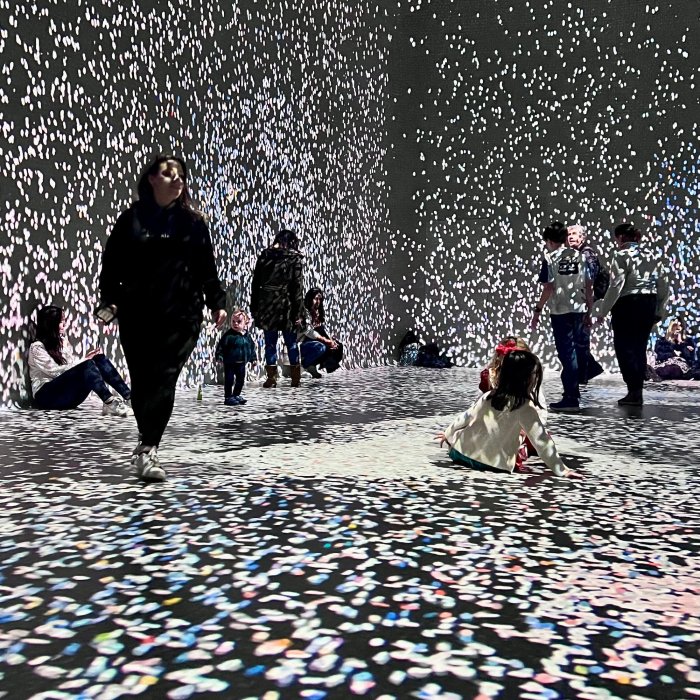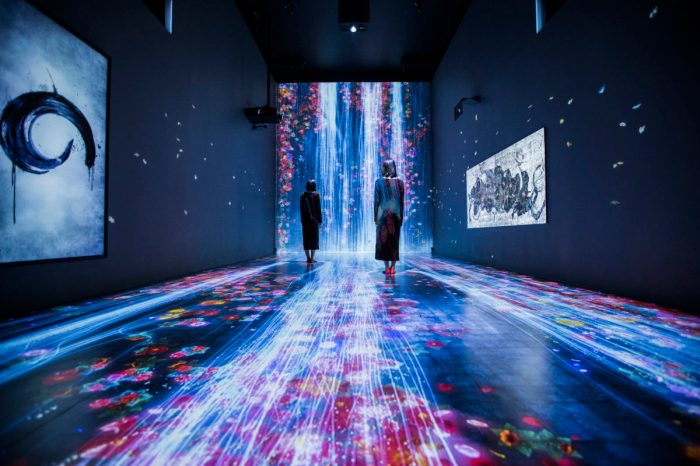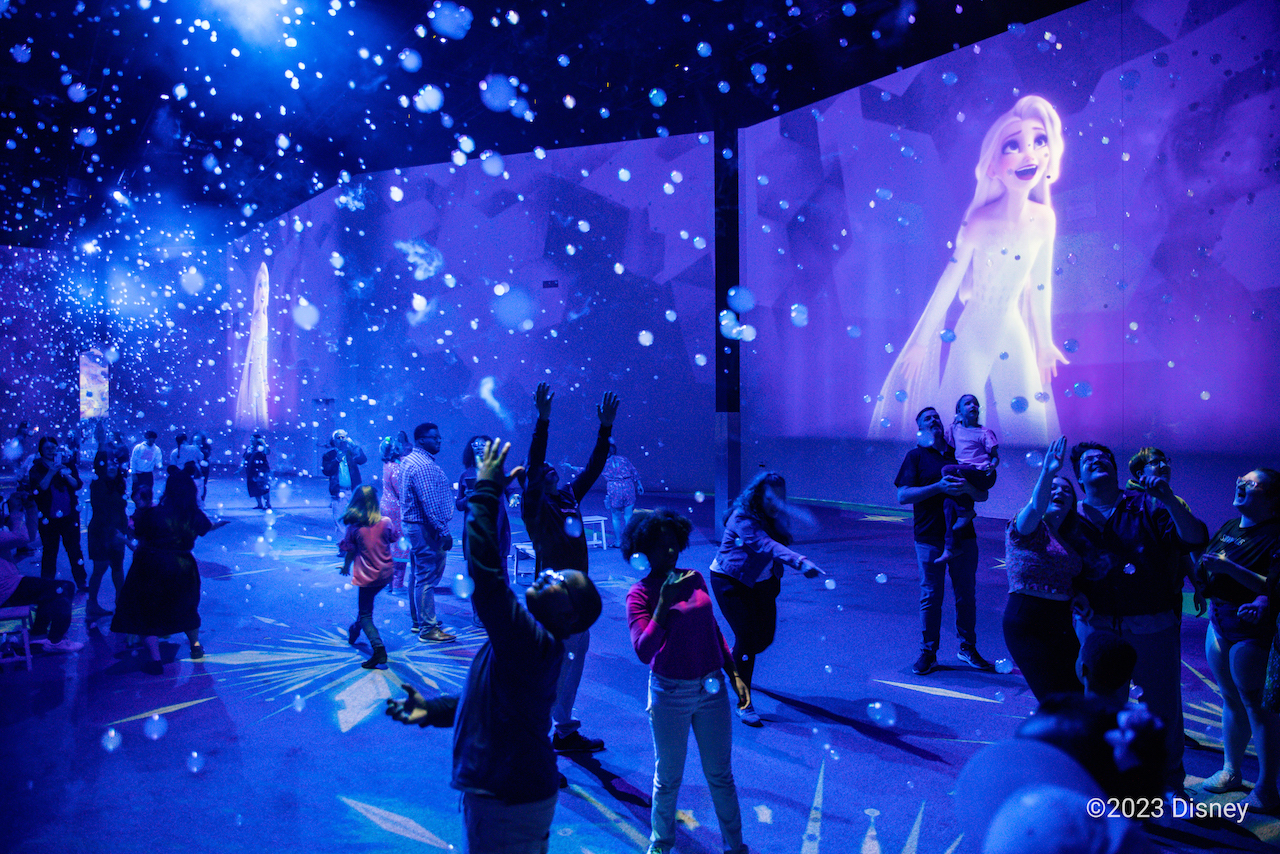Crafting truly immersive entertainment experiences requires a blend of artistic vision and technical expertise. This guide delves into the key principles of designing for engagement, exploring how to leverage interactive elements, sensory stimulation, and compelling narratives to captivate audiences. We’ll examine the practical aspects of implementation across various platforms, from mobile games to virtual reality environments, ensuring your designs resonate with users and leave a lasting impact.
From understanding the psychology behind user engagement to mastering the technical nuances of sound design and visual aesthetics, we’ll provide actionable strategies to elevate your entertainment projects. We’ll also address the crucial role of user feedback in iterative design, helping you create experiences that are not only enjoyable but also adaptable and responsive to audience preferences.
Understanding the Principles of Immersive Design

Creating truly immersive entertainment experiences requires a deep understanding of how users engage with digital environments. It’s not simply about presenting visually appealing content; it’s about crafting a holistic experience that stimulates multiple senses and fosters a sense of presence and agency within the designed world. This involves careful consideration of various design principles and a clear understanding of the user journey.
Stages of User Engagement in Immersive Experiences
A successful immersive experience guides the user through a series of carefully orchestrated stages, building engagement and creating a lasting impression. Visualizing this process as a flowchart helps clarify the crucial steps involved. Imagine a flowchart with four main stages: Initiation, Immersion, Interaction, and Resolution. Initiation involves the initial contact with the experience, perhaps through a captivating introduction or compelling visual. Immersion represents the point where the user is drawn into the experience, their senses engaged and their attention fully captured. Interaction is where the user actively participates, exploring the environment, making choices, and influencing the narrative. Finally, Resolution concludes the experience, offering a sense of closure and potentially leaving a lasting impression. The arrows connecting these stages represent the smooth transition between each phase, crucial for a seamless and engaging experience. The entire process is designed to be a fluid, almost imperceptible journey from one phase to the next.
The Impact of Sensory Stimulation on User Experience
Sensory stimulation plays a vital role in shaping the user’s experience. Visual stimulation, such as high-quality graphics, realistic lighting, and compelling visual storytelling, creates a sense of presence and realism. Auditory stimulation, through immersive soundscapes, realistic sound effects, and dynamic music, enhances emotional engagement and environmental realism. Tactile stimulation, although less common in purely digital experiences, can be incorporated through haptic feedback devices, providing a physical connection to the virtual world and adding another layer of realism. For example, the subtle rumble of a vehicle in a racing game, or the resistance of a virtual tool in a surgical simulator, significantly enhances immersion and engagement. The effective combination of these sensory inputs contributes to a more believable and emotionally resonant experience.
Examples of Successful Immersive Experiences
Several experiences showcase the power of immersive design. First, consider the game *Half-Life 2*. Its realistic graphics, detailed environments, and compelling narrative created a sense of presence and agency for players, establishing a benchmark for immersive first-person shooters. Second, the virtual reality experience *Beat Saber* demonstrates the effectiveness of combining visual and auditory stimulation. The vibrant visuals, synced with the energetic music and intuitive gameplay, create a highly engaging and physically active experience. Third, theme park rides like those found at Disney World often masterfully combine visual, auditory, and even tactile elements (through motion and physical effects) to create a fully immersive and memorable experience for guests. These examples highlight the importance of integrating various sensory inputs and compelling narratives to craft truly memorable and impactful experiences.
The Role of Storytelling in Creating Engaging and Memorable Entertainment
Storytelling forms the backbone of many successful immersive experiences. A compelling narrative provides context, motivation, and emotional depth, making the experience more meaningful and engaging for the user. A well-crafted story provides a framework for interaction, allowing users to make choices that shape the narrative and influence the outcome. By investing users emotionally in the story, designers create a deeper connection, fostering a more lasting and memorable experience. Think of the emotional resonance of a game like *The Last of Us*, where the narrative and character development are as crucial to the immersive experience as the visual fidelity. A strong narrative anchors the experience, making the user’s journey more meaningful and emotionally resonant.
Interactive Elements and User Engagement

Creating truly immersive entertainment experiences hinges on effectively engaging users through interactive elements. This involves more than just passive consumption; it requires active participation and a sense of agency. By carefully selecting and integrating interactive elements, designers can significantly enhance the overall enjoyment and memorability of their creations. This section explores various interactive elements, their applications, and best practices for their implementation.
Interactive Element Comparison
The choice of interactive elements significantly impacts user engagement. The following table compares and contrasts several key elements, highlighting their strengths and weaknesses in different entertainment contexts.
| Interactive Element | Description | Applications in Entertainment Design | Strengths | Weaknesses |
|---|---|---|---|---|
| Gamification | Integrating game mechanics into non-game contexts to increase engagement. | Loyalty programs, educational apps, fitness trackers | Motivates users, encourages completion of tasks, provides clear goals. | Can feel artificial or manipulative if poorly implemented; requires careful balancing of reward systems. |
| User-Generated Content (UGC) | Allowing users to create and share content within the experience. | Social media platforms, online games, collaborative storytelling platforms | Increases user investment, fosters community, provides unique and diverse content. | Requires robust moderation to prevent inappropriate content; can be challenging to manage and scale. |
| Virtual Reality (VR) | Creating immersive, three-dimensional environments that users can interact with. | Gaming, simulations, virtual tours, theme park rides | Highly immersive and engaging; allows for unprecedented levels of interaction. | Can be expensive to develop and deploy; requires specialized hardware; can cause motion sickness in some users. |
| Augmented Reality (AR) | Overlaying digital information onto the real world. | Mobile games (Pokémon Go), interactive advertising, educational tools | Blends digital and physical worlds seamlessly; can enhance real-world experiences. | Requires a device with a camera and processing power; accuracy can be affected by lighting and environmental conditions. |
Mobile Game User Interface Design
Consider a mobile puzzle game where players must match colored gems to clear levels. The user interface would feature a vibrant, visually appealing design with clear, intuitive controls. The game board would be centrally located, with easily accessible buttons for pausing, accessing a help menu, and viewing the player’s score and progress. Usability is paramount; large, easily tappable buttons would prevent accidental touches. Aesthetics are achieved through bright, cheerful colors and smooth animations that provide visual feedback during gameplay. The overall style would be clean and uncluttered to avoid cognitive overload. The game’s progress would be tracked through a visually engaging progress bar, rewarding the player with a sense of accomplishment.
Feedback Mechanisms and User Engagement
Effective feedback mechanisms are crucial for maintaining user engagement and motivation. Real-time feedback, such as visual cues indicating successful actions or immediate consequences for incorrect choices, provides users with a sense of control and progress. Regular updates and notifications, along with leaderboards or social sharing options, can also encourage continued participation. The absence of timely and relevant feedback can lead to frustration and disengagement. For instance, a slow-loading game or a lack of clear instructions can quickly turn off players.
Best Practices for Incorporating User Feedback
Regularly collecting and analyzing user feedback is essential for iterative design improvement. Several best practices include:
- Implementing in-game surveys or feedback forms to gather immediate user opinions.
- Actively monitoring social media and online forums for user comments and reviews.
- Conducting user testing sessions to observe user behavior and identify pain points.
- Analyzing game analytics data to understand user patterns and identify areas for improvement.
- Responding to user feedback promptly and transparently, showing users that their opinions are valued.
Technical Considerations and Implementation

Creating truly immersive entertainment experiences requires careful consideration of technical aspects across various platforms. Success hinges on seamless integration of design elements, optimized performance, and a cohesive user experience. This section delves into the crucial technical elements involved in bringing your vision to life.
Optimizing for Different Platforms
Adapting an entertainment experience for diverse platforms, such as mobile devices, desktop computers, and virtual reality (VR) headsets, demands a flexible design approach. Mobile platforms prioritize streamlined interfaces and efficient resource management due to limitations in processing power and screen size. Desktop experiences can leverage larger screens and more powerful hardware for richer visuals and complex interactions. VR, on the other hand, necessitates a completely different design paradigm, focusing on spatial audio, 360-degree visuals, and intuitive interaction methods such as hand tracking or controllers. A successful strategy involves creating a core experience adaptable across platforms, with platform-specific optimizations applied to enhance usability and performance. For example, a mobile game might simplify controls and reduce graphical fidelity compared to its desktop counterpart, while a VR experience might incorporate haptic feedback to increase immersion.
Integrating Sound Design and Music
Sound design plays a pivotal role in creating an immersive and engaging experience. Careful consideration of ambient sounds, sound effects, and musical score significantly contributes to the overall atmosphere and emotional impact. The integration process typically involves collaborating with sound designers and composers to create a cohesive soundscape that complements the visuals and gameplay. Different sound design techniques, such as spatial audio and dynamic music, can be employed to enhance immersion and responsiveness. For example, footsteps might change based on the surface being walked on, and the music might intensify during moments of action. The choice of audio formats (e.g., MP3, WAV, Ogg Vorbis) should be made based on considerations of file size, quality, and platform compatibility.
Creating a Visually Appealing and Consistent Aesthetic
A visually appealing and consistent aesthetic is crucial for creating a captivating entertainment experience. This involves leveraging color theory to establish mood and atmosphere, and utilizing visual hierarchy to guide the user’s attention. Color palettes should be carefully selected to evoke specific emotions and create a cohesive visual identity. For instance, warm colors might be used to create a sense of excitement and energy, while cool colors might be used to create a more calming and serene atmosphere. Visual hierarchy involves arranging elements in a way that prioritizes important information, using techniques such as size, contrast, and placement to guide the user’s eye. Consistent use of typography, imagery, and visual style across all aspects of the experience helps reinforce brand identity and enhances overall user experience.
Software and Technologies Used in Immersive Entertainment Design
A wide range of software and technologies are employed in the creation of immersive entertainment experiences. Game engines such as Unity and Unreal Engine provide comprehensive tools for developing interactive 3D environments, integrating visual effects, and managing game logic. 3D modeling software like Blender and Maya are used to create assets such as characters, environments, and props. Audio editing software such as Audacity and Pro Tools are used for sound design and music composition. VR development tools and SDKs provide the necessary frameworks and APIs for creating immersive VR experiences. Additionally, platforms like SteamVR and Oculus SDK offer specific tools for VR development. The specific technologies used depend on the type of entertainment experience being created and the desired level of fidelity and interactivity. For example, a simple mobile game might be developed using a less complex game engine, while a high-fidelity VR experience might require the use of more advanced tools and technologies.
Last Point

Designing for immersive entertainment is a journey of continuous learning and refinement. By understanding the core principles of user engagement, leveraging interactive elements effectively, and mastering the technical aspects of implementation, you can create experiences that truly resonate with your audience. Remember to prioritize user feedback, iterate on your designs, and always strive for innovation to keep your creations fresh and captivating. The result? Entertainment that not only entertains but also leaves a lasting impression.